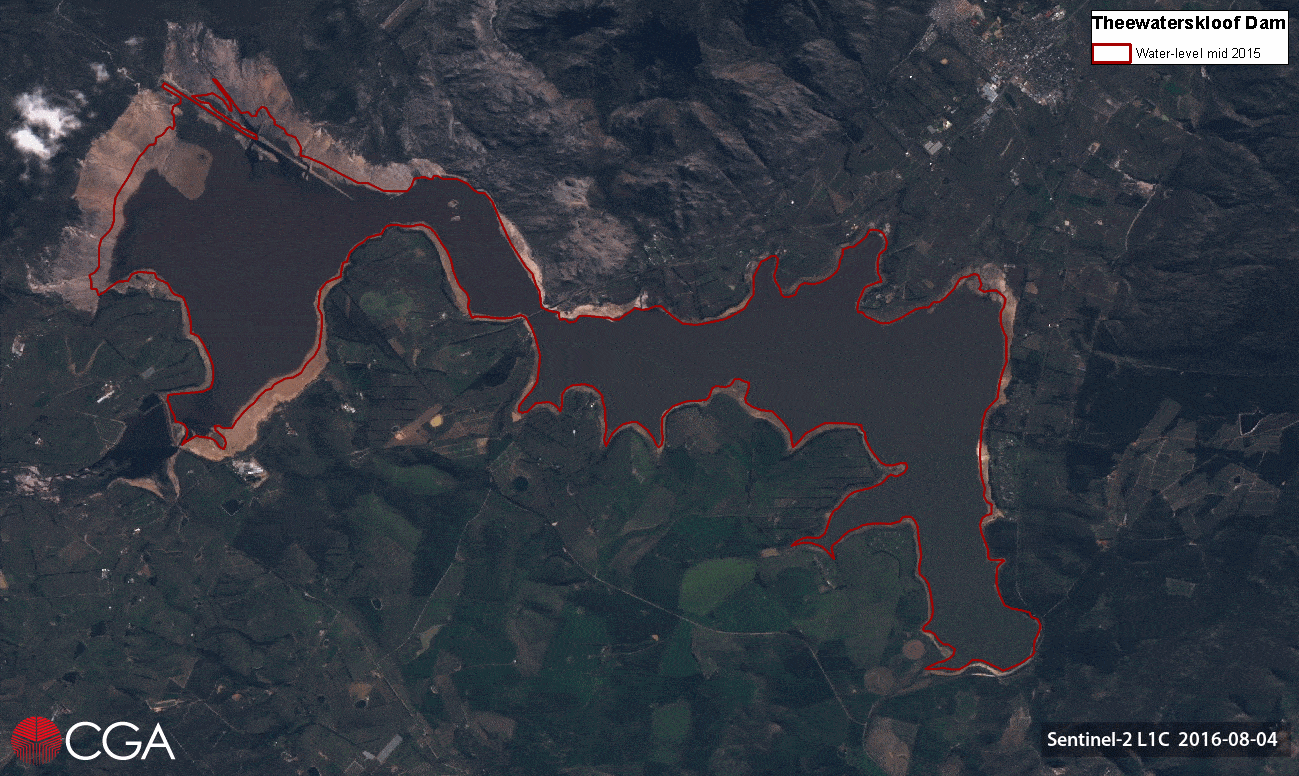The largest dam in the Western Cape, namely Theewaterskloof Dam, is the next dam being considered in our satellite time-series. Established in 1978, the earth-fill dam was constructed in the Riviersonderend River near Villiersdorp, with the mountains of the Hottentots-Holland Nature Reserve serving as the primary catchment. With a capacity of over 480 000 megalitres, Theewaterskloof Dam supplies over 50% of Cape Town’s drinking water and also supplies irrigation water to numerous farms in the region.
Due to the ongoing drought, the water level of the dam dropped below 15% in May 2017. Thanks to the rainfall received in June and July, its level has recovered to over 20%. The last 10% of the dam’s water is can only be extracted with great difficulty, and extremely high rainfall is required this winter to restore the dam’s water level to non-critical. Consequently, the City of Cape Town recently intensified water restrictions from level 4a to 4b, limiting water use to 87 l (down from 100 l ) per person per day.
To see the other dams featured in this series, visit the news page on our website.

